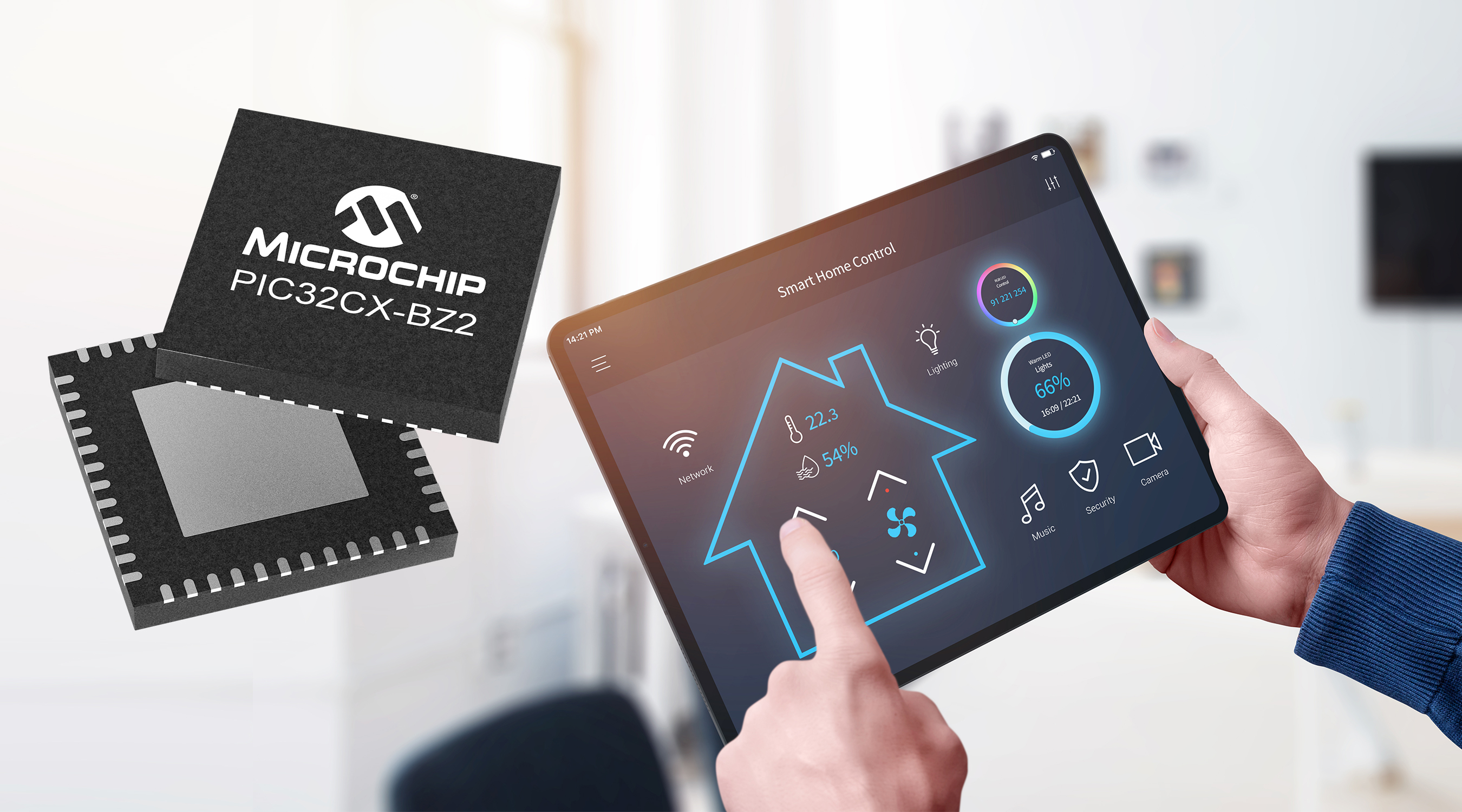PIC32CX-BZ2 series MCUs integrate Bluetooth Low Energy and other wireless functions with comprehensive analogue performance and design support
Wireless connectivity has become mandatory for many products, but often increases the cost and complexity of system design because it usually must be added as part of the larger application. Microchip Technology Inc (Nasdaq: MCHP) is now introducing its first Arm-Cortex® M4F-based PIC microcontroller/MCU series that solves this wireless connectivity challenge by integrating Bluetooth Low Energy (BLE) directly into the fundamental device of a system and supported by a comprehensive developer ecosystem.
“Our PIC32CX-BZ2 MCU series removes barriers to bringing radio-based applications to market – from availability and complexity to certification and long-term support concerns,” said Steve Caldwell, vice president of the Wireless Solutions Business Unit at Microchip. “Our new devices offer radio connectivity tightly coupled with an MCU that builds on our long-standing expertise and is supported by a vertical manufacturing approach. This includes the actual ICs, Microchip’s highly integrated software stacks, in-house module manufacturing, and a customer-focused non-discontinuation strategy.”
The PIC32CX-BZ2 series covers system-on-chip devices (SoCs) as well as globally certified wireless modules. In addition to BLE capability, the series also offers Zigbee® stacks and over-the-air/ OTA updates. Hardware features include 12-bit A/D converters (ADC), multiple timers/counters for control channels (TCC), an integrated encryption engine and interfaces to touch, CAN, sensor, display and other peripherals. The 1 MB flash memory supports extensive application codes, multi-protocol radio stacks and OTA updates. The AEC-Q100 Grade 1 (125 °C) qualified packages simplify integration of the radio link when highly robust solutions are required.
The PIC32CX-BZ2 MCUs simplify development through Microchip’s 32-bit MPLAB® Harmony embedded software development framework.
The integration of MPLAB Code Configurator enables developers to quickly prototype with these MCUs by automatically generating code via drag-and-drop. Numerous application examples are hosted on GitHub and linked via MPLAB Code Configurator and MPLAB Discover. RF design with PIC32CX-BZ2 SoCs is simplified through the ecosystem’s chip-down reference design packages and wireless design check services. Customers with little or no RF knowledge can benefit from Microchip’s WBZ451 modules, which are pre-certified for numerous regulations worldwide and enable optimised on-board RF design.
Development tools
In addition to the MPLAB Code Configurator, the MPLAB Harmony v3 framework includes numerous other tools and an ecosystem of debuggers, programmers, virtual sniffers and compilers. Other support includes GitHub demo applications and documentation, wireless design check services and building blocks that guide developers through all steps of the application development process. The PIC32CX-BZ2 MCUs are supported by the Curiosity development board PIC32CX-BZ2 and WBZ451 (part number: EV96B94A).
Availability
The PIC32CX-ZB2 series is available now. The PIC32CX1012BZ25048-I and PIC32CX1012BZ25048-E SoCs are supplied in a 7 mm x 7 mm 48-QFN (quad flat no-leads) package. The WBZ451PE-I and WBZ451UE-I modules are equipped with an integrated PCB antenna and a U.FL connector for an external antenna, respectively.





